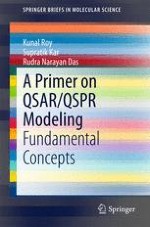2015 | OriginalPaper | Buchkapitel
4. Newer Directions in QSAR/QSPR
verfasst von : Kunal Roy, Supratik Kar, Rudra Narayan Das
Erschienen in: A Primer on QSAR/QSPR Modeling
Aktivieren Sie unsere intelligente Suche, um passende Fachinhalte oder Patente zu finden.
Wählen Sie Textabschnitte aus um mit Künstlicher Intelligenz passenden Patente zu finden. powered by
Markieren Sie Textabschnitte, um KI-gestützt weitere passende Inhalte zu finden. powered by
